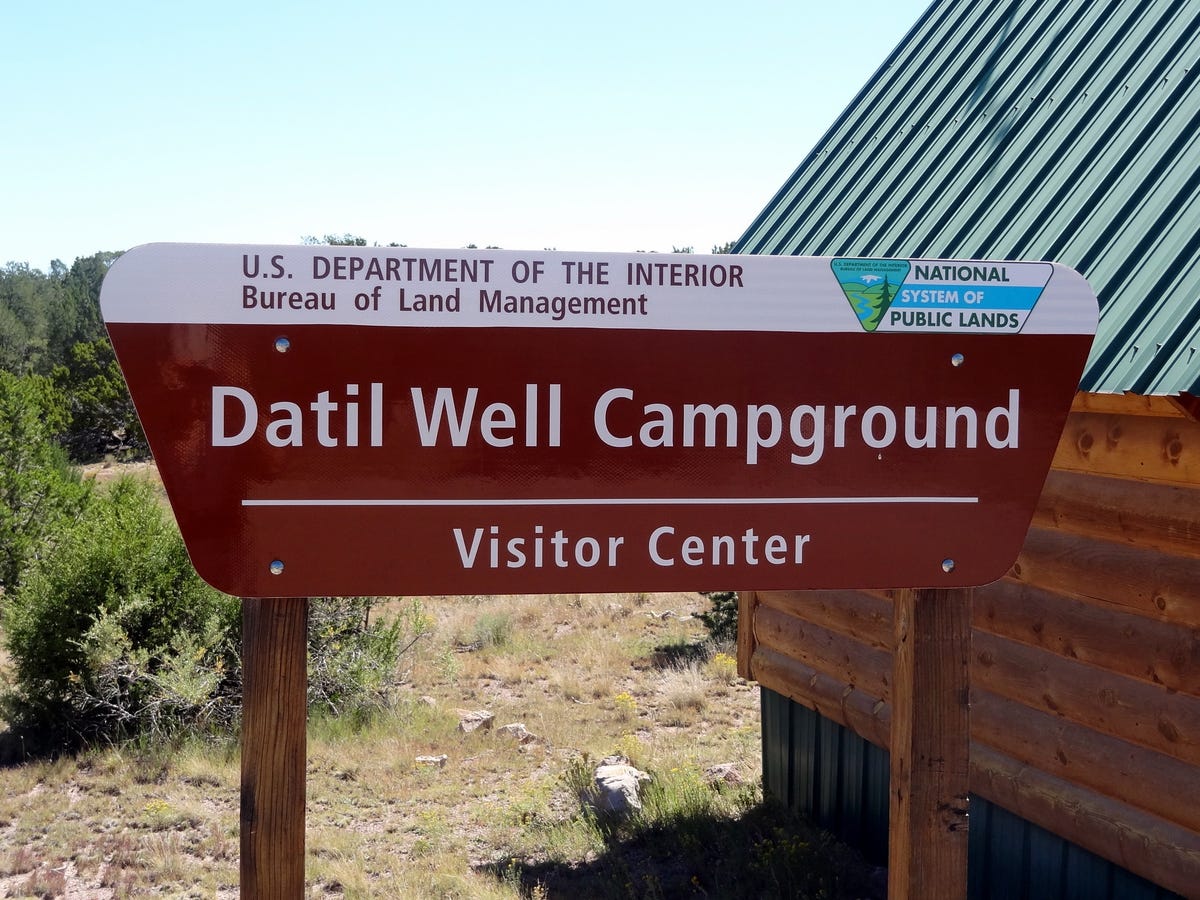Stargazing on an old cowboy trail (pictures)
Welcome to the darkness of Datil, New Mexico, a remote town bordered by a radio observatory and topped by a nighttime light show of spectacular stars.

Datil Well Campground
The view of the night sky around Datil, New Mexico, hasn't changed much since the area's cattle-driving heyday in the early 1900s. Visitors today are treated to wide-open views of the Milky Way, bright planets and hurtling satellites.
The US Bureau of Land Management runs the Datil Well Campground, a quiet spot located on an old cattle drive trail. The well water is cold. The nights are dark and full of stars. It's a top stargazing spot in New Mexico.
Far from the city lights
The red circle highlights the location of Datil, New Mexico, as seen by Dark Site Finder, an interactive mapping tool that shows levels of light pollution. You can plug in your location and look around for the closest dark spot for stargazing.
A distant view
This view from a lookout spot along a Datil Well Campground hiking trail includes the Very Large Array radio observatory in the distance. The VLA sits on the flat, light brown plains of San Agustin. A white dish antenna is visible as a small dot near the center of the image.
Not many people
The Datil Well Campground is located just past the town of Datil, New Mexico, which boasts a population of just 54 people, according to the 2010 census. That sparse population keeps the light pollution down. The landscape around the tent is typical for the area. It's dry and filled with scrubby juniper and pinon trees at an altitude of over 7,000 feet (2,130 meters).
Telescope in a box
This large orange case contains a homemade reflecting telescope belonging to Tony Allred (right), one of the campers during the weekend. It takes two people to carry the large device.
Reflecting telescope
Tony Allred's reflecting telescope contains an 8-inch (20-centimeter) mirror purchased on eBay. Most of the rest of the telescope is made from scratch. Telescope manufacturer Orion supplied the focuser and eye pieces.
Setting up the telescope
It takes a lot of manhandling to set up this homemade reflecting telescope. Owner Tony Allred spins the massive housing onto the tripod base. At night, the telescope opens up a new dimension to the stars, showing many more than can be seen with the naked eye.
Focusing on the stars
While Tony Allred mostly built his homemade telescope from scratch, it includes a mirror from eBay and this focuser made by Orion. The large telescope requires two people to carry it, but it's still portable enough to fit in the back of a truck along with camping gear.
Ready for night
The night sky around Datil, New Mexico, offers clear views of the Milky Way. A telescope enhances the experience, showing just how dense the star field is out there in space.
Horned lizard
The town of Datil, New Mexico, may have very few people in it, but wildlife thrives in the arid landscape. This horned lizard (better known as a horny toad), hangs out near an ant mound at the Datil Well Campground.
Rainbow at sunset
A small rainstorm generated a double rainbow at the Datil Well Campground just as the sun set on a Friday night.
Soon night arrived and the Milky Way made a glorious appearance.
VLA dish
Each antenna in the Very Large Array measures a massive 82 feet (25 meters) in diameter. The antennas sit on rails so the dishes can be arranged into different formations. The VLA played an important role in the 1997 Jodie Foster movie "Contact" about the search for extraterrestrial communications.
Wide view of the VLA
Seen from a distance, the 27 antenna dishes of the Very Large Array radio observatory look small. Each one is actually massive. They work together to act as one giant antenna. The VLA is located near Datil, New Mexico.

